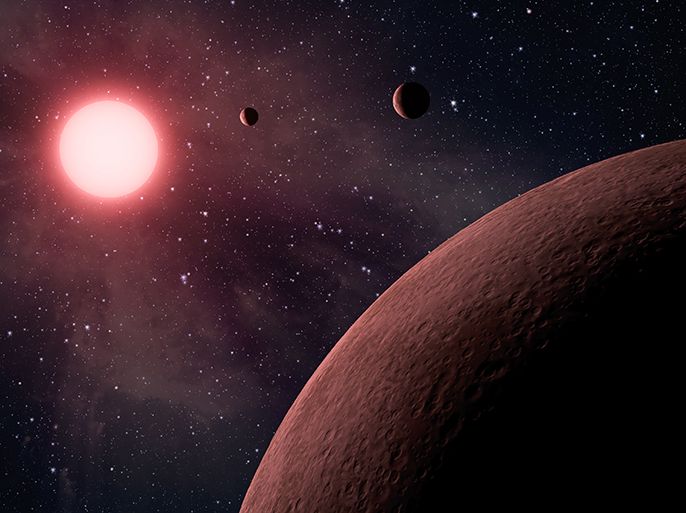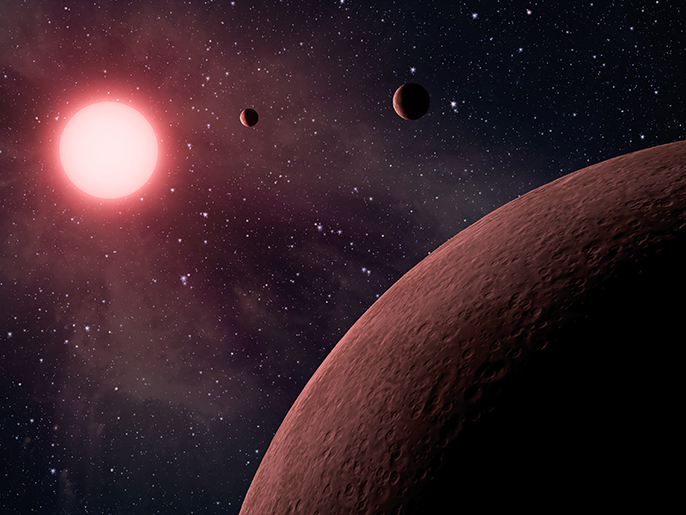عرض سماوي نادر لثلاثة كواكب


ينضم كوكب عطارد الصغير هذا الأسبوع في عرض سماوي نادر إلى كوكبي الزهرة والمشتري، أكثر الكواكب لمعانا في السماء خلال هذا الشهر.
وتبلغ المسافة الحقيقية بين كوكب الزهرة، ثاني أقرب الكواكب إلى الشمس، والمشتري الذي يدور في مدار بعد كوكب المريخ، عشرات الملايين من الكيلومترات، لكنهما يدوران معا.
بينما تصل المسافة بين الكوكبين في السماء إلى أقل قدر لها هذا الشهر، وينضم إليهما كوكب عطارد الأقرب مدارا من الشمس.
ويصل العرض السماوي النادر إلى ذروته الأحد عندما تظهر الكواكب الثلاثة على هيئة مثلث لامع من الضوء في السماء الغربية بداية من نصف ساعة بعد الغروب.
ووصفت وكالة الفضاء والطيران الأميركية (ناسا) على موقعها على شبكة الإنترنت هذا الثلاثي بالجيد بشكل خاص لأنه يضم الكوكبين الأكثر سطوعا في السماء.
وسوف يكون التشكيل الكوكبي ظاهرا بوضوح حتى في المدن ذات الإضاءة الساطعة بشرط إمكانية الرؤية الواضحة للأفق الغربي.
ويؤكد ناسا أن تقارب ثلاثة كواكب إلى هذه الدرجة أمر نادر نسبيا، حيث كانت آخر مرة لهذا التجمع قد حدثت في مايو/أيار 2011 ولن يتكرر المشهد قبل أكتوبر/ تشرين الأول 2015.